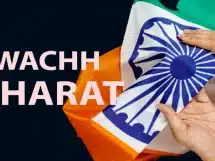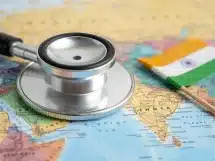In India, 60 percent of the OPD spend is on medicines, the rest is on doctor’s fees and tests. There is a need for robust coverage of OPD visits under cashless insurance.
India has surpassed the United Kingdom (UK) and become the world’s fifth largest economy in terms of Gross Domestic Product (GDP). A decade ago, India was in 11th position globally, while the UK was fifth. Projections say that India could become the world’s third-largest economy by the end of the decade, racing ahead of Japan and Germany.
This is an occasion to celebrate. Economic growth of this scale and speed, however, also needs an introspection at per capita level. It also needs a look at not just what and how the country earns, but what it spends on, too.
The missing middle
A crucial area where the spending needs to be augmented is healthcare. According to NITI Aayog, the apex public policy think tank of the Government of India, 30 percent of Indians, (a whopping 42 crore) do not have any health insurance. These people are called the “missing middle.” The bottom 50 percent at least gets its hospitalisation covered under the Government’s Ayushman Bharat insurance scheme. The top 20 percent have some form of social or private insurance.
The “missing middle” are those who end up with out-of-pocket expenditure on healthcare and often slip below the poverty line because of it. This is a heterogeneous group of both urban and rural residents, many of whom are small businessmen, farmers, or self-employed professionals. Interestingly, this group often does have the capacity to pay modest insurance premiums. However, there is a lack of adequate awareness and easy accessibility to health insurance.
The OPD factor
Another area of healthcare that still remains largely out of the ambit of insurance cover is the Outpatient Department (OPD) visits. In India, 60 percent of the OPD spend is on medicines, the rest is on doctor’s fees and tests. There is a need for robust coverage of OPD visits under cashless insurance.
Most insurance packages offer OPD insurance as an add-on product, and unlike the system of cashless hospitalisations, the OPD claims are only reimbursed after the customer has submitted the documents relating to the visit, including prescriptions and diagnosis tests. Thus, again, most OPD payments are out-of-pocket expenses.
Studies by the National Sample Survey indicate that majority of Indians prefer to go to private practitioners for OPD visits, and to government-run facilities when hospitalisation is needed. A government health centre could lower the out-of-pocket expenditure, but for various reasons — long waits, shortage of medical staff, distances involved — patients prefer to visit a private practitioner for OPD visits. In continuation, they then purchase their medicines from a private pharmacy.
Often, because OPD visits can become a financial burden, there is a tendency among patients to avoid that visit to the doctor till the problem becomes very serious. This not only worsens an ailment that could have been cured at an early intervention, but it also leads to the chances of a patient having to undergo hospitalisation. In the Indian context, this is a big lacuna in the existing healthcare setup.
The digital connection
As healthcare goes digital, there’s an urgent need to bring all stakeholders together on a common virtual platform. There is huge scope for aggregators who can bring the OPD centres, private clinics, pharmacies and insurance companies on one platform so that a seamless, cashless health care experience can be provided for all patients.
The need for a robust digital network exists across the social spectrum – from metros and small towns to rural India. The government today recognises the need for such systems, as does the regulatory body, Insurance Regulator and Development Authority (IRDA).
The COVID-19 pandemic put the focus on digital initiatives as much as it did on healthcare access. There were valuable lessons learnt that we must not forget as India continues to speed towards augmenting its economic growth. We need to ensure that all citizens are on board. For that, we must adopt out-of-the-box interventions, aided by the ever-evolving digital landscape in the country.
(The author is the co-founder and CEO of MedPay)
Read more: https://h-leads.com/healthcare-data-breach-costs-hit-a-new-record/

















